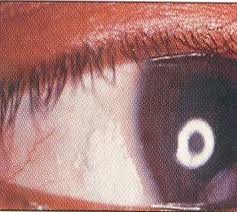Disorders
- Anorexia Nervosa
- Binge Eating Disorder
- Bitot's Spots
- Bulimia Nervosa
- Macrocytic Anemia
- Megaloblastic Anemia
- Night Blindness
- Peptic Ulcer
- Prophylaxis
- Rhodopsin
- Rickets Disease
- Scurvy Disease
- Wilson’s Disease
- Xerophthalmia
- Hemochromatosis
- Siderosis
- Thalassemia
- Sideroblastic Anemia
- Porphyria Cutanea Tarda
- Sickle Cell Anemia
- Kwashiorkor
- Menkes Disease
- Neutropenia
- Keratomalacia
- Beriberi
- Pellagra
- Macrocytic
- Megaloblastic
- Pernicious Anemia
- Scurvy
- Rickets
- Osteomalacia
- Abetalipoproteinemia
- Muscular Dystrophy
- Haemolytic Anaemia
- Cholestatic Constipation
- Pretibial Myxedema
- Cretinism Diesease
- Hypothyroidism
- Hypothyroidism
- Feline Hyperthyroidism
- Graves Disease
- Plummer’s Disease
- Thyrotoxicosis
- Acrodermatitis Enteropathica
- Congenital Hypothyroidism
- Hashimoto’s Thyroiditis
- Hyperthyroidism
- Keshan Disease
- Lose Weight with Hypothyroidism
- Metal Fume Fever
- Postpartum Thyroiditis
- Thyroid Storm
- Subclinical Hypothyroidism
Bitot's Spots
Each year approximately 8 to 10 million children worldwide, ranging 3 to 5 years in age, are believed to develop milder Xerophthalmia manifested by night blindness or conjunctival xerosis associated with vitamin A deficiency and malnutrition. This condition presents a drying of the conjunctiva with the development of characteristic oval or triangular spots called Bitot's spots, sometimes appearing also as irregular in shape.

Such irregularities are located superficially in the conjunctiva, the membrane that covers most of the eyeball. Bitot's spots are foamy gray or white patches and appear as a sign of vitamin A deficiency. This condition is one of the oldest recorded in medical history, dating back to the ancient era.
There is evidence that more than 3500 years ago, the Egyptians treated what today is known as Bitot's spots, using animal liver. Some people believe that the bible also makes reference to this condition in several passages between the new and the Old Testament. Jeremiah 14:6 “and the asses did stand in high places, their eyes did fail, because there was no grass"
With "no grass" it is presumptive that Jeremiah was talking about Bitot's spots, in times when vitamin A intake was not considered as part of a regular diet to prevent eye, skin and systemic disease. In fact, today the deficiency of this vitamin causes a series of health problems that could be prevented as simple as adding vitamin A rich-foods to the meals.
Bitot's spots are common signs of vitamin A deficiency, usually seen in developing countries and the common cause of blindness in children worldwide. Those spots lead to Xerophthalmia, which is endemic in many countries, and the mortality rate is high for vitamin A deficiency, especially in developed countries due to the high alcohol consumption that affects vitamin A status in the body and increases its susceptibility to infections.
Sometimes under-diagnosed and untreated, Bitot's spots are directly responsible for night blindness. Because this condition is composed of the accumulation of keratinized epithelial debris and secretions, they can develop into a condition called Xerophthalmia. During the middle stages, the eye ulcers develop while the cornea melts if Bitot's Spots are not treated in their first stages, resulting in irreversible blindness.
As said before, this condition is caused due to severe vitamin A deficiency, but Bitot's spots are also known to occur in presumable healthy individuals with fat and vitamin mal-absorption. The total blindness is caused directly by tissue death when there is a lack of vitamin A. Making some changes in the individuals' lifestyle may also help to prevent this condition.
Not only Bitot's spots, but many other ocular and skin illnesses can be prevented with a regular intake of vitamin A in its natural form such as fruits and vegetables in your diet or in the form of natural herbal dietary supplements, or medications prescribed by a physician or health care professional. The avoidance of eyestrain and smoke-filled rooms is also necessary to preserve eye's optimal condition, the same as to protect them from direct and indirect sunlight.
In addition to Xerophthalmia, Bitot's spots may be part of other symptoms or early signs of diverse eyes diseases such as blurred vision, cataracts, conjunctivitis, corneal ulceration, corneal vascularization, diplopia, exophthalmos, decreased lacrimation, myopia, night blindness, ocular palsy, ophthalmoplegia, optic neuritis, papilledema, photophobia, scotomatas, and poor visual acuity.
The World Health Organization has set a critical value for the prevalence rates of Bitot's spots, to measure the association between this condition and vitamin A deficiency. Based in their criteria, physicians can determine if Bitot’s spots can be considered a public health problem that will lead to night blindness and major disease. If such value is exceeded by a multiple of twenty times, the risk may be considered as high.
